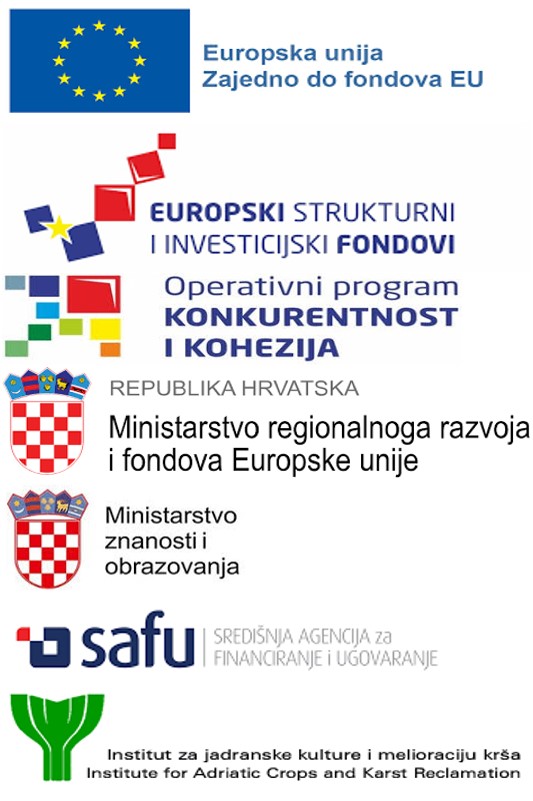Olive is the most important agricultural crop, not only in the area of Split-Dalmatia County, but along the entire coastal area of the Republic of Croatia. In the last two decades olive production in Croatia has almost doubled, and according to FAOSTAT, more than 35,000 tonnes of olives are produced annually. Olive fly (Bactrocera oleae Rossi) and olive moth (Prays oleae Bern.) are the most important pests of olive in almost all olive growing areas in the world, which negatively affect the quantity and quality of the fruit. These economically most important pests have been living in the entire Mediterranean basin for over a thousand years and are capable of completely destroying yield in olive groves where they are not controlled. It is important to emphasize that the olive fly in 2014, in the Republic of Croatia, caused large losses in olive production. Namely, in that year olive production was only 8,840 t, and two years earlier 50,945 t (FAOSTAT, 2016). This data shows how much damage to olive growing can cause these pests. For years, the protection of olives from pests, in our country and in the world, has focused only on the use of pesticides, which in the last few decades has resulted in a negative environmental impact. Preserving biological balance and the entire agro-ecosystem is a key problem today. Intensive agrotechnical measures impair the harmony of olive grove biocenosis in terms of reducing the diversity of harmful and beneficial species and damaging their natural habitat. It is this intensive use of agrochemicals, which impairs the harmony of biocenosis, that has led to the emergence of different models of protection with as little negative environmental impact as possible. For this reason, nowadays, olive growing is increasingly directing to an integrated or environmentally friendly production system where pesticide use is restricted. Despite all efforts to combat these pests as successfully as possible, they are still among the most dangerous in olive groves. Different olive varieties show varying degrees of susceptibility to attack by the mentioned pests. While some varieties have persistently low intensity of attacks in the same agroecosystem, others are severely attacked year after year. Although previous research, both in the field and in the laboratory, has shown that these pests have a greater tendency for some varieties, the true mechanism in selecting a host for oviposition has remained unclear. The results of our research could provide answers to many concerns about the olive / pest relationship, which would result in a major contribution to the protection of plants of the Republic of Croatia and the world. Finding volatiles that could be responsible for attracting harmful species in the future could be a new tool to flight monitoring and protection against fly and moth. The purpose of this project is to develop a new method for the protection of olives and to implement its application in olive growing, with the aim of reducing losses in the production of olive and olive oil caused by the attack of economically significant pests, not only in the Republic of Croatia but also throughout the Mediterranean and beyond. This would certainly make Croatia stand out as one of the leaders in olive protection among the Mediterranean olive groves. Such an innovation would enrich the Croatian, European and world markets with a new recognizable product.
